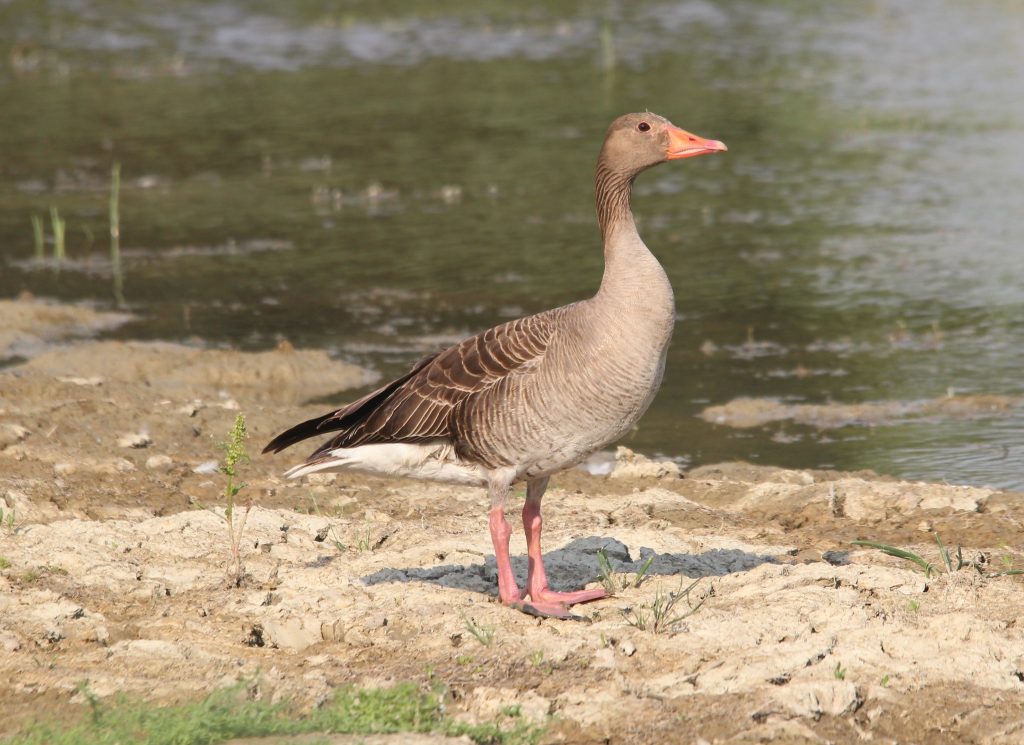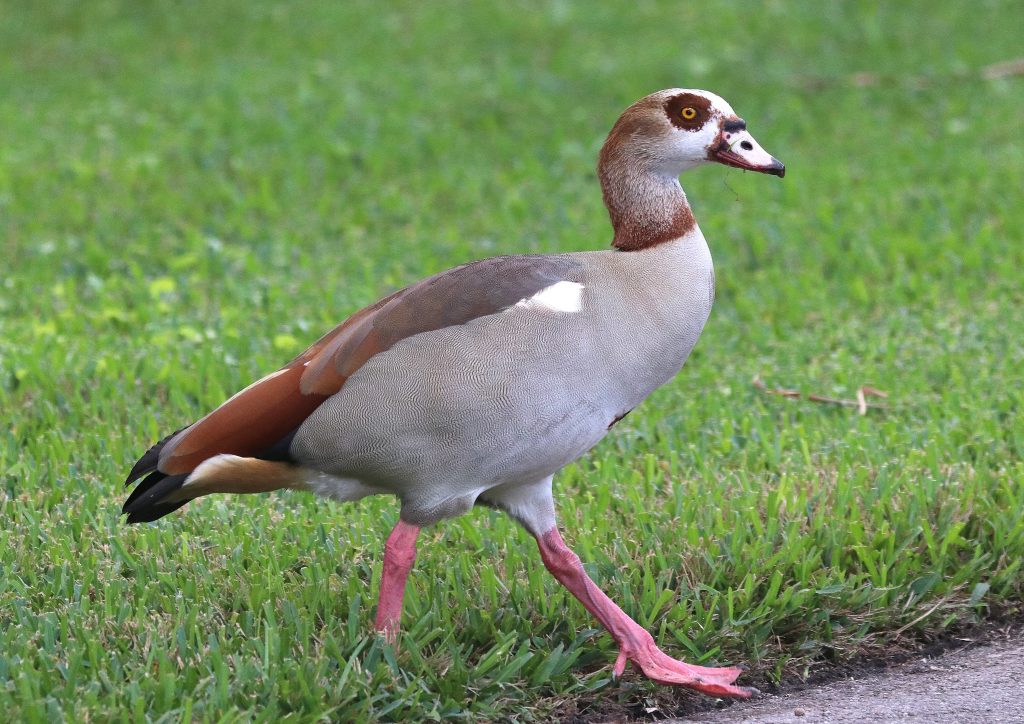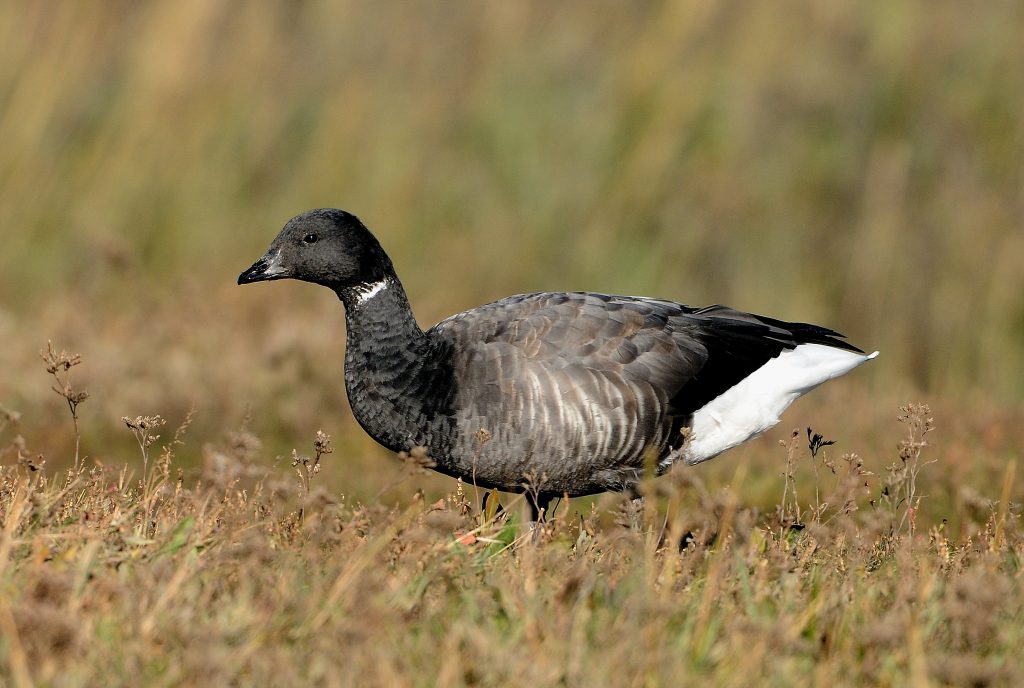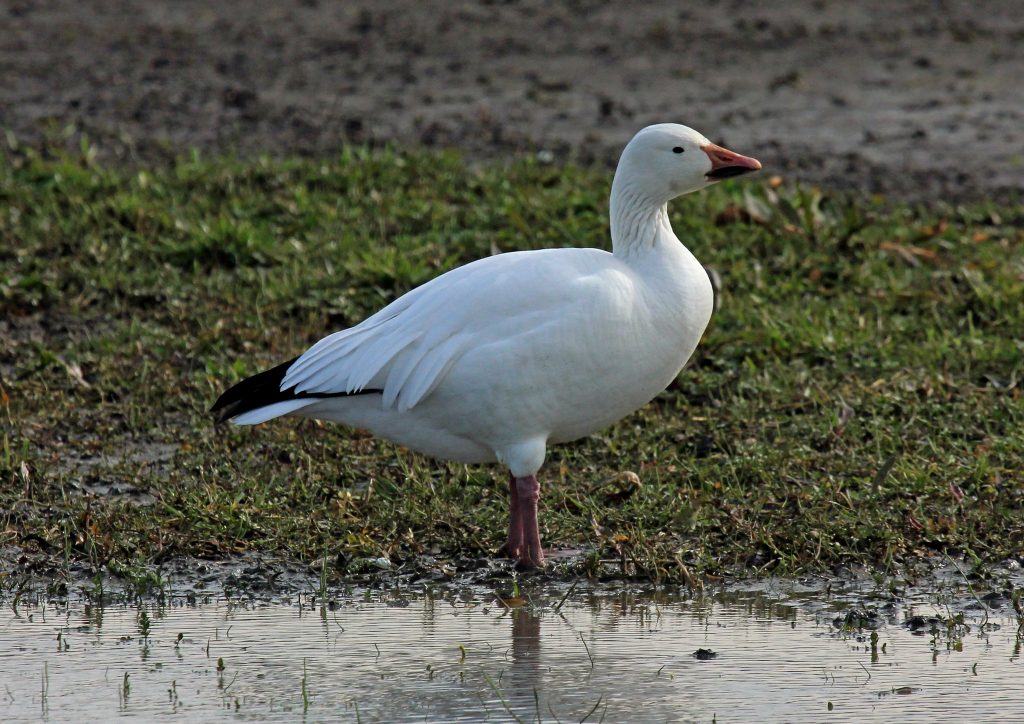Geese are birds in the family Anatidae, comprising mainly of the genera Anser and Branta. They are a common sight in our estuaries and other wetlands, particularly during autumn and winter. Many species are migratory visitors to the UK, arriving in autumn and leaving again in spring to places such as Greenland and Iceland. There are some resident goose species, however, which are present all year round, such as greylag and Canada geese.
They feed mainly on seeds, grass, other water plants and some small invertebrates. They are primarily grazers and can search for food both on land and underwater. In UK species, males and females rarely differ in colour, though males are usually larger in size. Geese are monogamous and often pair for life, but several studies have noted evidence of extra-pair copulation (mating outside of this pair bond). One study, for example, found evidence of extra-pair copulation in 14% of 42 Canada goose clutches.
Identifying geese can be based on colouration, distribution, calls, time of year and size. Very little equipment is needed for birdwatching, but we recommend a pair of binoculars or a scope, along with a guide to other waterfowl you may see.
Greylag Goose (Anser anser)
Distribution: Resident population is widespread throughout the UK, although less common in Wales and southwest England. Scottish and southwest England populations are boosted by winter migrant numbers.
Birds of Conservation Concern 4 (BoCC4) Status: Amber
Wingspan: 147–180cm
What to look for: The greylag goose has a grey body and a brown back. It has a brown and grey striped neck, an orange to pink bill and pink legs. They have a paler tail and pale secondary feathers that stand out in flight.

Canada Goose (Branta canadensis)
Distribution: Resident population, widespread, although less common in Scotland and Ireland.
BoCC4 Status: Not Assessed
Wingspan: 150–180cm
What to look for: The Canada goose has a black head, neck and bill, with a white patch on its throat. They have a white underside and a brown back, with black tail feathers and black legs.
Did you know? Canada geese are not native to the UK and were introduced from North America in the 17th century.

Egyptian Goose (Alopochen aegyptiaca)
Distribution: Resident population in East Anglia and southern coastal areas, with winter migrants in southeast England. The largest population is along the Norfolk coast.
BoCC4 Status: Not Assessed
Wingspan: 110–130cm
What to look for: This is a distinctive species, with a pale, dappled grey underside and darker grey to reddish-brown back and wings. They have a reddish-brown and white head with dark patches around their orange-yellow eyes. Their tail and primary feathers are black, and their secondary feathers are green. They have pink legs and feet, and a pale pink bill with a black tip and black basal knob, a prominent bump at the base of the bill.
Did you know? The Egyptian goose was first introduced to the UK as an ornamental bird that then escaped and now successfully breeds in the wild.

Barnacle Goose (Branta leucopsis)
Distribution: Throughout coastal areas in the UK during winter, with a resident breeding population in southern England.
BoCC4 Status: Amber
Wingspan: 132–145cm
What to look for: This species has a black head, neck and breast, with a white face and a black patch running from its eye to its black bill. It has a white underside, black and grey barred back, a black tail and black legs.

White-fronted Goose (Anser albifrons)
Distribution: Winter migrants are found in coastal areas throughout the UK, particularly near estuaries.
BoCC4 Status: Red
Wingspan: 130–165cm
What to look for: There are two subspecies of white-fronted goose in the UK, the Greenland white-fronted goose (A. a. flavirostris) and the European white-fronted goose (A. a. albifrons). The white-fronted goose is greyish-brown with a large white patch around the bill and orange legs. They have black bars on the front of their underside, white feathers under the tail and have a white line between their wings and body. The two subspecies differ in a number of ways but most notably the Greenland white-fronted goose has an orange-yellow bill and a darker, ‘oily’ appearance, whereas the European white-fronted goose has a pink bill and a lighter plumage.

Brent Goose (Branta bernicla)
Distribution: Found around estuaries and saltmarshes throughout most of the UK coastal areas in winter.
BoCC4 Status: Amber
Wingspan: 110–120cm
What to look for: This is a darker species, with a black head, neck and primary feathers. Their body is grey-black in colour, with either a dark or pale underside and a white tail. They have a white patch on their neck, a black bill and black legs.

Bean Goose (Anser fabilis)
Distribution: Two subspecies in the UK, taiga bean goose (A. f. fabilis) (Falkirk, Scotland and Norfolk, England) and tundra bean goose (A. f. rossicus) (erratic appearances in winter but most common in eastern and south-eastern England).
BoCC4 Status: Amber
Wingspan: Taiga: 147–175cm, Tundra: 118–140cm
What to look for: The taiga bean goose is darker and browner than other grey geese, with a darker head and neck and orange legs. It has an orange patch on its bill. The tundra bean goose has a similar appearance but is smaller, with a slightly darker plumage and a stockier body. It has the same orange patch on its bill but it is smaller, covering less than half of the bill.

Pink-footed Goose (Anser brachyrhynchus)
Distribution: Winter migrants are most common in coastal areas near large estuaries and central England.
BoCC4 Status: Amber
Wingspan: 135–160cm
What to look for: A medium-sized goose, this species is grey with a darker back and head, pink legs and feet, and a pink and black bill. It has white feathers under its tail and a striped pattern on its neck.

Snow Goose (Anser caerulescens)
Distribution: Migrant species are more likely to be spotted in Scotland and Ireland. There is also a feral breeding population in Scotland.
BoCC4 Status: Not Assessed
Wingspan: 132–165cm
What to look for: This species has two colour forms, an all-white body with black wing feathers (pictured) and a white-headed form with a blue-grey body and wings. In both forms, it has an orangy-pink bill and pink legs.


